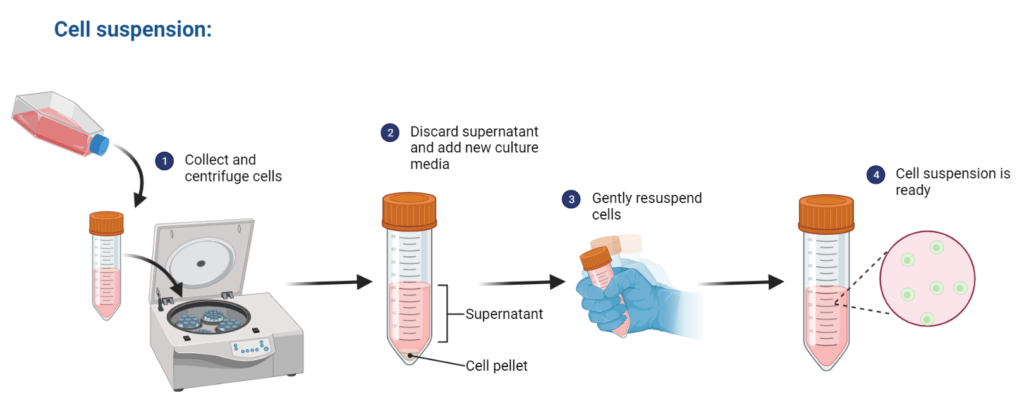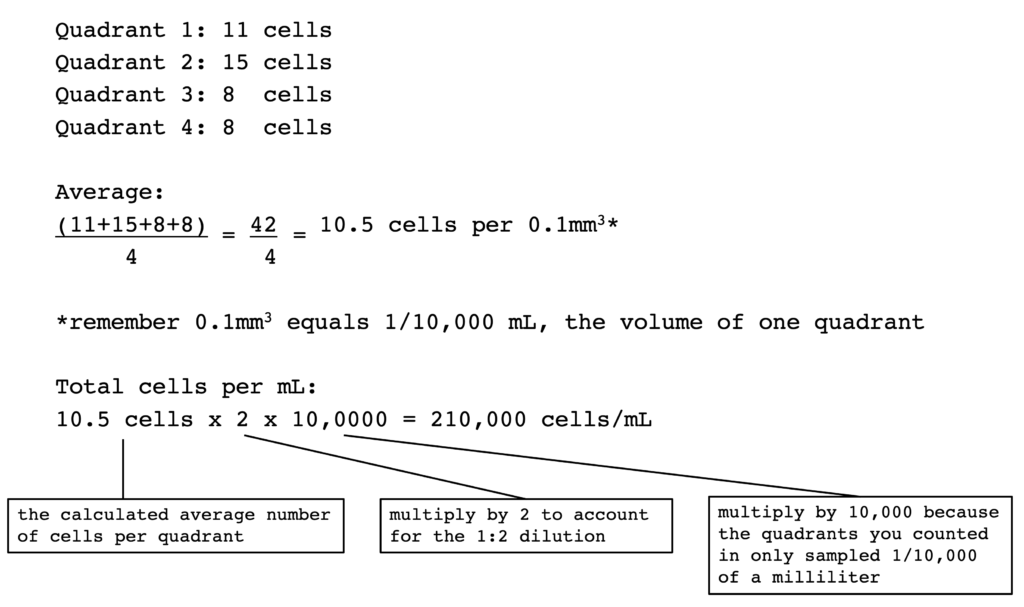by Catalina Cobos-Uribe
Technique Name: Cell counting
Fun Rating: 3/5

This technique, although extremely important when carrying out cell experiments, can feel tedious after a while. Fortunately, it is simple and quick, which is why I’m giving it 3 out of 5 fun cells.
Difficulty Rating: 1/5

What is the general purpose?
The purpose of this technique is in its name. Scientists often need to know how many cells they have at the beginning and end of an experiment. They can count cells, living and dead, using a dye to color them and a “fancy” slide to count them.
Why do we use it?
Let’s say we found a chemical that could be used to treat breast cancer. First, we would need to determine if this chemical kills cancer cells grown in the lab. To evaluate this, we would need to grow a specific number of breast cancer cells, expose them to the chemical, and determine the percentage of living cells after treatment. If the percentage of living cells is significantly lower than that observed in untreated cells, then we could confirm the anticancer activity of the chemical in cells grown in the lab.
How does it work?
If this were a recipe, I would tell you to grab a hemocytometer, trypan blue, a micropipette with its corresponding tips, a cell counter (optional), and, of course, cells.
Estimated time: 10 min

The first thing we would need to do is create a cell suspension; that is, collect and resuspend our cells in a known volume. If we have a cell culture, we need to collect the cells and centrifuge them to create a pellet. After eliminating the supernatant (the liquid on top of the cell pellet), we would add a specific volume of new culture media, let’s say 5 mL, and gently resuspend the cells.

Now that our cells are ready, we would mix one part of trypan blue and one part of our cell suspension (i.e., a 1:2 dilution) in a microtube. Trypan blue is a dye that can only enter dead cells and stain them blue, whereas living cells have a healthy and highly selective cell membrane that prevents trypan blue from entering the cell. Therefore dead cells will look blue under the microscope, while live cells have no color.
Next, we would load one drop of the trypan blue/cell suspension mixture into a hemocytometer, which I would describe as a “fancy” slide with specific known dimensions that make it perfect for cell counting. A hemocytometer has two grids, and each grid has nine quadrants. For cell counting, we would use the four 4×4 corner quadrants with an area of 1 mm2 and a volume of 0.1 mm3, equivalent to 1/10,000th mL (remember this number because we will use it in our calculations).

After loading our cell suspension into the hemocytometer, we would count the cells with the help of a microscope set at a 100x magnification. To calculate the number of cells, we need to average the number of cells obtained in the four quadrants, multiply it by the dilution factor of the trypan blue/cell suspension mixture and by 10,000 (which represents the volume of one 4×4 quadrant). I know math can be scary, but don’t worry, these are simple calculations. In this example, the calculations would look like this:

Almost done, we just need to adjust to the volume of our cell suspension. Since we suspended our cells in 5 mL, our total number of cells would be:

Using this same technique, we can also determine the percentage of live cells in our suspension. We just need to calculate the number of live cells/mL and then divide it by the total cells/mL.

This means that of our total cells, 86% are alive. If we were evaluating a cancer treatment, we would need to compare this percentage with that observed for cells that did not receive the treatment before concluding if our chemical has significant anticancer activity.
I remember that when I was in undergrad I was very intimidated by this technique. I was afraid of breaking the hemocytometer and I always forgot what I needed to multiply by what, but practice makes perfect. Hopefully this post can be a helpful guide whenever you find yourself in a counting cell situation.
